Meet Dr. Chason
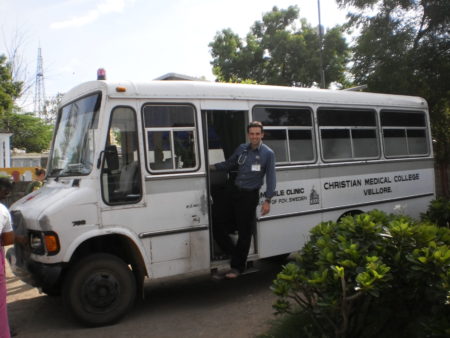
Mattia Chason, MD, is an attending pediatric hospitalist at Children’s National Medical Center for the Mid-Atlantic Kaiser Permanente Medical Group. He recently graduated from the Children’s National Health System Pediatric Residency program and was awarded a certificate in Global Child Health for his commitment to improving the health and lives of children in developing countries. His interest in global health dates back to college when he began participating in medical mission trips to Central America (Dominican Republic, Costa Rica, Nicaragua) with US volunteer physicians.
While a medical student at Tufts University in Boston, he continued to pursue opportunities in developing countries and was selected amongst students nationwide to work for three months in the pediatric ward at the “Hôpital Albert Schweitzer” in Lambaréné, Gabon. At the end of his first year of medical school, he spent two months in Vellore, India where he worked at a major referral center and provided clinical care through mobile clinics stationed in rural villages. As a second year resident interested in exploring the field of infectious diseases, he spent four weeks in Lima, Peru at the “Instituto Nacional De Salud del Niño.” He worked hand in hand with arguably the most renowned pediatric infectious diseases specialist in the country. As a third year resident at Children’s, he spent five weeks in Luang Prabang, Laos at the “Lao Friends Hospital for Children.” His main focus was educating Laotian pediatricians while supervising the care of hospitalized children. Most recently, he travelled through Project Medishare in partnership with George Washington University to Haiti, providing clinical care and serving as a mentor to local pediatricians as well as medical trainees from GWU.
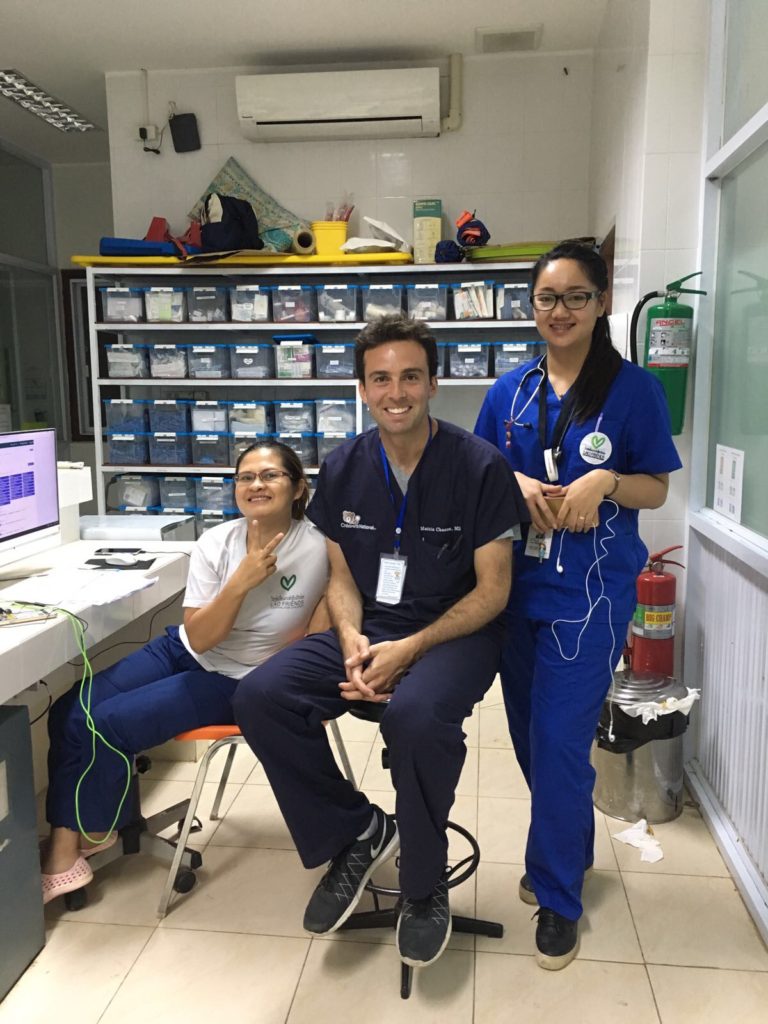
Growing up in Italy with a French mother and an American father, Dr. Chason’s global focus was only natural. “I think I had this vision that I always wanted to work in a culture and travel in a culture that wasn’t mine,” he recalls. Interested in medicine, “it just made a lot of sense” to combine his passion for healthcare and his desire to work internationally, he says. Dr. Chason began pursuing this combination while still an undergraduate at Tufts University, through volunteer medical mission trips with US Volunteer Physicians, travelling to the Dominican Republic, Costa Rica, and Nicaragua. Once he started medical school, Dr. Chason began to look for more opportunities to provide healthcare in low- and middle- income countries. In his first year at Tufts Medical School, he travelled to Vellore, India. There for two months, he divided his time between looking at pathology at a major referral center for southeastern India, and providing primary clinical care in mobile clinics set up in the most rural villages. “It was my first true exposure to patients,” Dr. Chason adds.
While in his fourth year of medical school, Dr. Chason was selected to travel to Lambaréné, Gabon to work at the historic Hôpital Albert Schweitzer, founded in 1913 by Nobel Peace Prize winner Dr. Albert Schweitzer. Spending three months at the hospital, the experience was Dr. Chason’s most rewarding. “I felt very privileged to be selected for that process and when I got there I really realized the significance of this hospital,” he recalls. Dr. Chason expresses admiration for the hospital’s founder, Albert Schweitzer, and remembers how admirers from all over the world would come to see the historic site. “It was very special,” he adds, not only because of the significance of the site, but also due to his fellow students, whom he describes as “very humane, ambitious, cultured, and with many interests and passions in life…a diverse and stimulating group of people.”
Fluent in French, Dr. Chason was able to communicate seamlessly with providers, patients, and the surrounding community in Gabon, a factor which dramatically increased his ability to “feel a part of the community”. Dr. Chason describes the experience as having two parts: providing pediatric clinical care from seven to five, and “assimilating with the local adolescents,” through their shared love of soccer in the evening. His clinical duties started with seeing the hospitalized pediatric patients in the morning, “approximately 25 children (in) 2 hours…nothing like rounding here in the US,” he recalls. The most common complaints? “Malaria, gastroenteritis and dehydration, malnutrition, pneumonia, unexplained high fevers, sickle cell crises, tuberculosis, (and) neonatal infections,” he says. It was hard work and very hands on. The hospital lacked many of the diagnostic lab tests available to physicians in the US, so Dr. Chason had to rely on his clinical medical skills, “(it) really helped me perfect the art of doing physical exams,” he recalls, “(and) allowed me to rely more on my intuition and clinical judgement and less on hard data.”
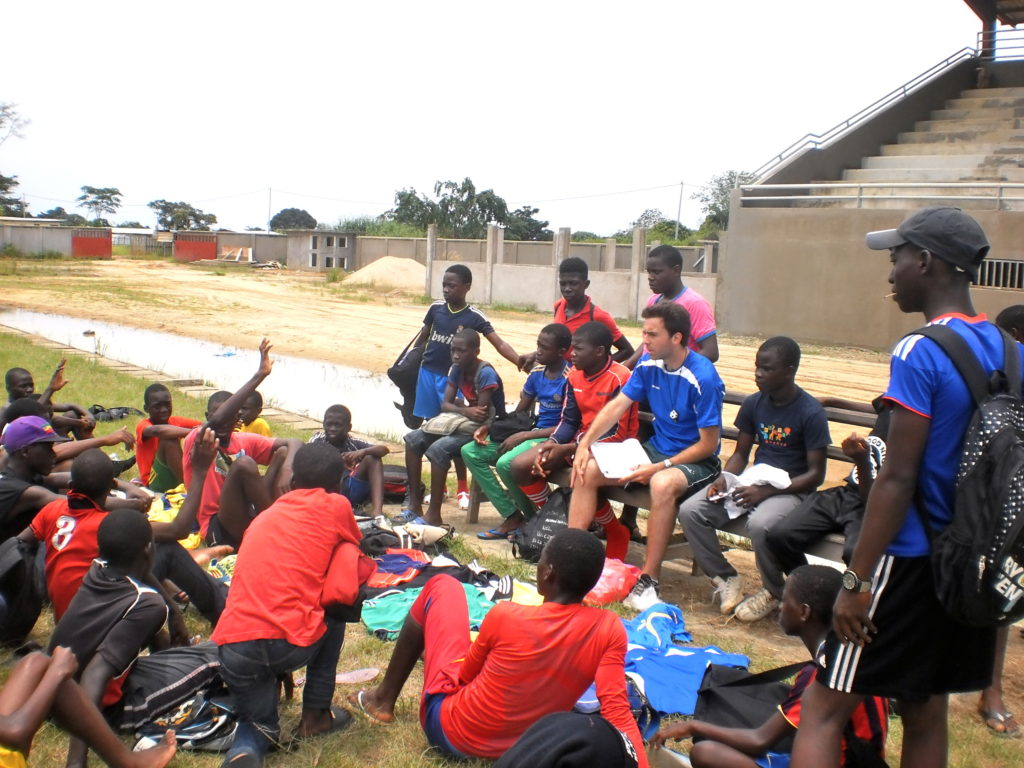
Following rounds in the pediatric ward, Dr. Chason was sent to examine newborns, born within the last 24 hours. The tranquility of the newborn division “was my moment of peace for the day,” he remembers. After that, he would spend the rest of his day seeing pediatric outpatients and going over the few lab results available for his kids. “(I) was astonished to see the number of crying babies waiting to be seen as an outpatient,” he remembers. Once he had gone over the test results, patients were either sent home with a follow-up appointment or hospitalized for continued care. Despite the hectic conditions and intense demands, Dr. Chason “loved” being an Albert Schweitzer fellow, and remains very appreciative of the level of responsibility entrusted to him while there.
Arguably the more impactful half of Dr. Chason’s experience, however, was playing soccer with and coaching a team of teenage Gabonese boys. What started as pick up practice soon turned into a team of over 40 adolescents, “ecstatic” at the opportunity to play in an organized setting and receive coaching. On his first Saturday there, Dr. Chason observed a group of about 20 boys playing soccer on a field near the hospital. He approached them, showed them some skills, and offered to start coaching them the following Monday. Eleven kids showed up, and with each following week the number of players grew. With the help of two Gabonese young men, Dr. Chason was able to lead the team through practice twice a week and a scrimmage on Saturdays. The boys eventually grew tired of playing each other, so Dr. Chason arranged for matches with local opponents. Despite a few initial losses, the second to last week of his visit the team won their first game against a team from nearby town, Isaac.
Dr. Chason remembers when the final whistle blew and the game was over, “all I could do was smile, as my throat was slowly tightening up and my eyes getting watery.” Before leaving Lambaréné, concerned about the longevity of the team, Dr. Chason encouraged the two Gabonese assistant coaches to continue the mission, reminding them of how much they would have loved to have a similar outlet as a teen. Since then, Dr. Chason has collected and shipped uniforms, cleats, balls, socks, and other equipment to his team, contributing to the sustainability of the effort. Although it was unlikely these materials would ever arrive, miraculously the team received the supplies, much to Dr. Chason’s delight; “I couldn’t believe the boxes actually made it all the way to that small village in the jungle…I was ecstatic!”
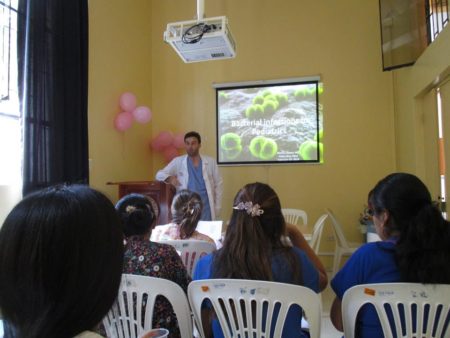 Following his time in Gabon, and now in the second year of his residency at Children’s National, Dr. Chason was considering specializing in infectious diseases. Curious to learn more about what that experience would be like, he set up an internship in the largest pediatric hospital in Lima, Peru, with an infectious disease expert, Dr. Candela. Most common were “ varicella with superimposed bacterial infections, pertussis, tuberculosis, cervical abscesses, disseminated cat scratch disease, HIV, and parasitic infections,” he recalls. “It was an amazing experience,” he remembers, and Dr. was “superb” as a mentor. Peru is perfect for learning about infectious diseases, as it is has three distinct climes, coast, jungle, and mountains. While there, Dr. Chason gave a presentation on “bread and butter bacterial infections,” to his fellow trainees, as while the number of irregular cases was very high, there were not many common bacterial infections. “It was very well received and it was a great experience for me to talk about these infections and teach,” he says.
Following his time in Gabon, and now in the second year of his residency at Children’s National, Dr. Chason was considering specializing in infectious diseases. Curious to learn more about what that experience would be like, he set up an internship in the largest pediatric hospital in Lima, Peru, with an infectious disease expert, Dr. Candela. Most common were “ varicella with superimposed bacterial infections, pertussis, tuberculosis, cervical abscesses, disseminated cat scratch disease, HIV, and parasitic infections,” he recalls. “It was an amazing experience,” he remembers, and Dr. was “superb” as a mentor. Peru is perfect for learning about infectious diseases, as it is has three distinct climes, coast, jungle, and mountains. While there, Dr. Chason gave a presentation on “bread and butter bacterial infections,” to his fellow trainees, as while the number of irregular cases was very high, there were not many common bacterial infections. “It was very well received and it was a great experience for me to talk about these infections and teach,” he says.
However, like in Gabon, it was the cultural immersion that really impacted Dr. Chason. Again, being fluent in the local language significantly aided him in communicating with fellow providers, patients, and the Peruvian family that generously housed him for his week-long visit. Staying with them was “probably the highlight of the trip,” and “really enriched my experience,” he says. His host, another physician who splits her time between a hospital in Houston, TX and Lima, informed Dr. Chason of the intricacies of the Peruvian healthcare system, a perspective he would otherwise not have fully grasped. However, the home-cooked and “delicious” Peruvian cuisine served by the family cook was no insignificant bonus.
More recently, in 2017 as a third year resident, Dr. Chason spent five weeks in Luang Prabang, Laos at the “Lao Friends Hospital for Children.” A new hospital, recently set up by renowned Japanese photographer Kenro Izu and based on a similar hospital in Cambodia, almost all of the medical staff were foreign providers. With the long-term goal of replacing the foreign providers with trained locals, the site was very much still in the development stages when Dr. Chason served as the pediatric inpatient care supervisor. “My goal was to go somewhere I hadn’t been, Southeast Asia, and I wanted to be a part of a hospital that was new and see how innovation could occur and how fast things can happen” recalls Dr. Chason, “that’s exactly what I got.”
In addition to the gorgeous surroundings, Luang Prabang is a UNESCO world heritage site, Dr. Chason loved working with a group of “like-minded people…all coming to this hospital to try and improve it from the ground up.” He stayed with a global health fellow from Boston Children’s, who was there for six months. “We would bike to the hospital together every day, the scenery was so beautiful, you would see the sunrise every morning, it was magical, and then you would get there and start running the show with the locals,” he remembers. Overseeing the inpatient population was also a plus, given Dr. Chason’s passion for working in the hospital setting. The number of complex cases he would see, including empyemas, pyomyositis, septic arthritis, bone fractures, unrepaired Tetralogy of Fallot, malnutrition, bronchiolitis, and beriberi thiamine deficiency, were unusual and engaging, providing him the opportunity to see diseases he would seldomly get the chance to see in the US.
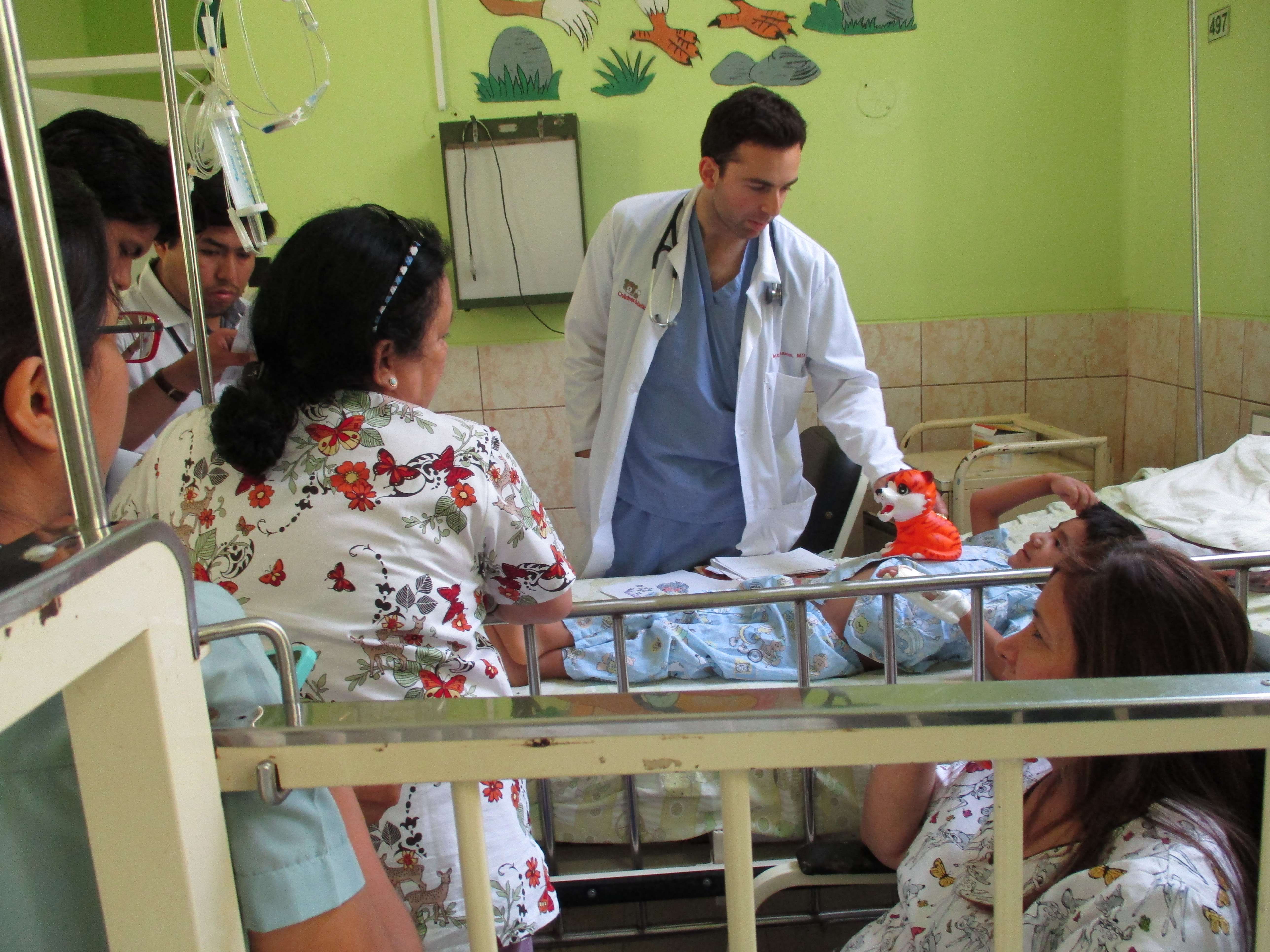 Dr. Chason was also very enthusiastic about the rapid growth the hospital was undergoing. “Everyday you would have multiple things happening, a new EMR system, a new hospital division such physical medicine rehab, new guidelines, there was so much to do that there were new advancements everyday and just watching that growth occur in front of my eyes was fascinating,” he recalls. Witnessing this growth and the people driving it, in addition to the cultural, geographical, and linguistic diversity of Luang Prabang, made this particular experience additionally enriching for Dr. Chason. “Coming up with innovative ideas, and the like-minded people you find, everyone is there to make things better for the locals, they are often hard workers, they are often very patient and willing to adapt to the local customs, they are very open minded, and they don’t try to force things upon others, and that’s what makes the difference between whether you are having a positive or a negative influence,” he says.
Dr. Chason was also very enthusiastic about the rapid growth the hospital was undergoing. “Everyday you would have multiple things happening, a new EMR system, a new hospital division such physical medicine rehab, new guidelines, there was so much to do that there were new advancements everyday and just watching that growth occur in front of my eyes was fascinating,” he recalls. Witnessing this growth and the people driving it, in addition to the cultural, geographical, and linguistic diversity of Luang Prabang, made this particular experience additionally enriching for Dr. Chason. “Coming up with innovative ideas, and the like-minded people you find, everyone is there to make things better for the locals, they are often hard workers, they are often very patient and willing to adapt to the local customs, they are very open minded, and they don’t try to force things upon others, and that’s what makes the difference between whether you are having a positive or a negative influence,” he says.
Finally, Dr. Chason’s most recent global health work has been in Haiti, through GWU’s partnership with Project Medishare. Further along in his training than previous trips, he now served more as a mentor and supervisor to younger medical trainees from the US and local Haitian providers. “I was providing direct care but in an indirect way in the sense that I was letting the medical trainees obtain a history, write prescriptions and make recommendations, but always keeping a close eye and making sure we were doing what was best for the patient,” he recalls. “I love that role,” he adds. Going on the trip as a mentor, Dr. Chason cherished the opportunity “(to) give them that spark that would lead them to want to come back to Haiti in the future for a longer period of time.”
 In the future, Dr. Chason hopes to establish a lasting relationship with a low-income community overseas. “What I would like to do is find a country where I can have the most impact and keep going to that country…anywhere I could have a more sustainable and more meaningful long-term impact,” he says. Given his past successes when able to speak the local language, it is important for Dr. Chason that he be able to communicate directly with providers and patients. This shouldn’t be difficult, considering he is fluent in four of the world’s most popular languages. In an ideal world, Dr. Chason would also be able to combine his love for soccer with his medical work. “Another dream is to be part of building a soccer field near a local hospital and then running a team,” he says. Here at Children’s, mentorship is increasingly a priority for Dr. Chason. He is passionate about inspiring other providers to become engaged in global health work, and has spoken about his experiences overseas several times. Through sharing his global work, he hopes to, “inspire (younger providers) to appreciate, despite the problems we have here with our healthcare system, inspire them to appreciate that we are still able to get a lot more care than other people can.”
In the future, Dr. Chason hopes to establish a lasting relationship with a low-income community overseas. “What I would like to do is find a country where I can have the most impact and keep going to that country…anywhere I could have a more sustainable and more meaningful long-term impact,” he says. Given his past successes when able to speak the local language, it is important for Dr. Chason that he be able to communicate directly with providers and patients. This shouldn’t be difficult, considering he is fluent in four of the world’s most popular languages. In an ideal world, Dr. Chason would also be able to combine his love for soccer with his medical work. “Another dream is to be part of building a soccer field near a local hospital and then running a team,” he says. Here at Children’s, mentorship is increasingly a priority for Dr. Chason. He is passionate about inspiring other providers to become engaged in global health work, and has spoken about his experiences overseas several times. Through sharing his global work, he hopes to, “inspire (younger providers) to appreciate, despite the problems we have here with our healthcare system, inspire them to appreciate that we are still able to get a lot more care than other people can.”


